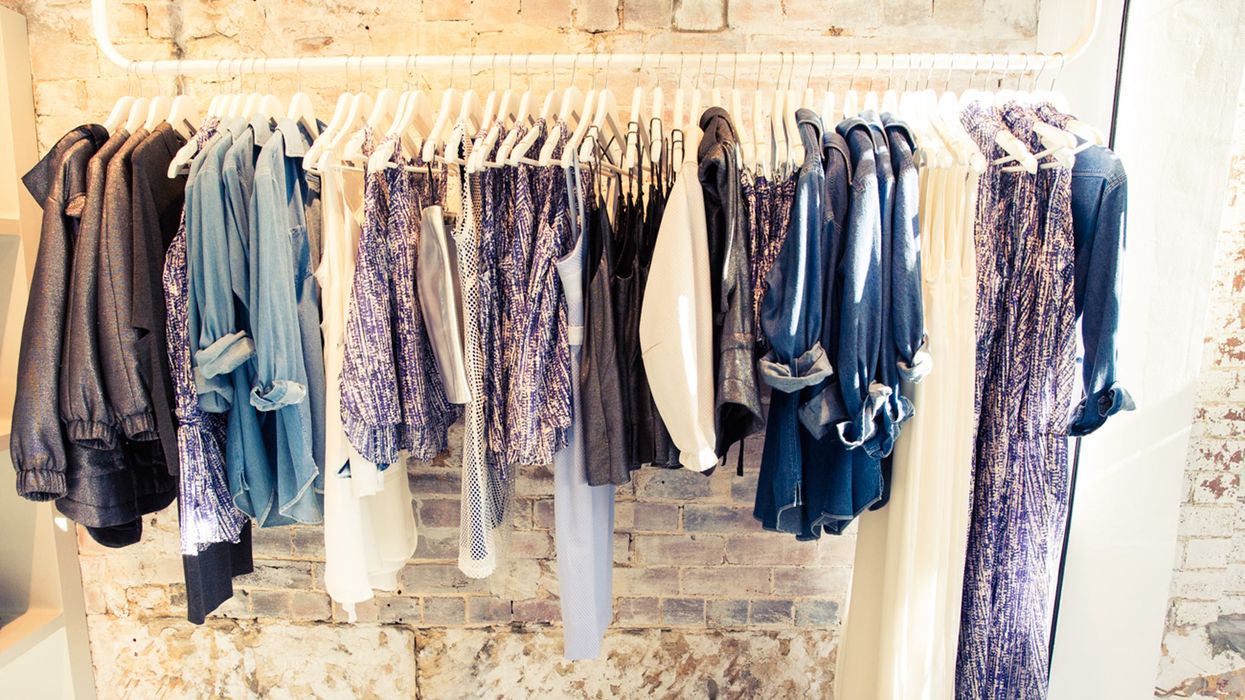Checking Out the Advancement and Effect of Clothing on Modern Fashion Trends
The development of garments has actually significantly influenced modern-day style patterns, merging historic criteria with sophisticated advancements. Legendary figures like Coco Chanel and Yves Saint Laurent reinvented the fashion market by presenting principles that focus on convenience and access, which proceed to resonate today.
Historical Fashion Influencers
In the tapestry of fashion history, particular figures have left an indelible mark, forming the fads and styles that define whole ages. Coco Chanel, a cutting edge developer, redefined ladies's fashion by presenting comfortable, elegant clothing that left from restrictive bodices. Her legendary Chanel fit and little black dress have actually ended up being timeless staples in closets worldwide. Christian Dior's post-war "New Look" in 1947, with its party of feminineness via full skirts and cinched waistlines, noted a return to luxury and has actually continued to influence developers.
Elsa Schiaparelli is an additional critical number, renowned for her avant-garde layouts that incorporated surrealist art, teaming up with Salvador Dalí to produce wayward pieces that tested traditional aesthetics. Her ingenious use color and strong patterns resounds in modern style. Yves Saint Laurent, on the other hand, democratized haute couture with prêt-à-porter collections, bringing path designs to the masses and setting a criterion for modern ready-to-wear lines.
These enthusiasts, to name a few, not only reinvented style in their times but likewise established enduring trends that reverberate in today's garment industry, supplying a foundation upon which contemporary developers continue to develop and introduce. Their heritages highlight the value of creative thinking and bold in vogue's ever-evolving narrative.
Technical Advancements in Fashion
In the middle of the vibrant landscape of the garment industry, technical advancements stand at the forefront of advancement, improving just how developers develop and customers involve with style. The assimilation of 3D printing has actually transformed style procedures, enabling designers to trying out complex frameworks and sustainable materials that were previously inconceivable. This innovation assists in fast prototyping, decreasing waste and speeding up production times.

Smart textiles, installing innovation into fabrics, are likewise transforming the market. Innovations like self-cleaning and temperature-regulating materials offer improved capability and comfort. Wearable innovation, incorporating attributes like physical fitness tracking and interaction, adds a brand-new dimension to style, combining looks with functionality.
Cultural Shifts and Design
As technological improvements remain to reshape the style industry, cultural shifts are similarly significant, redefining style and consumer preferences. In the last few years, the surge of social media platforms has sped up the circulation of international style trends, allowing diverse cultural impacts to merge and coexist. This digital interconnectivity has actually promoted the blog here quick exchange of concepts, leading to a more comprehensive and diverse analysis of design that mirrors the multifaceted nature of contemporary culture.
Social recognition and admiration have actually motivated designers to draw inspiration from a more comprehensive range of ethnic and historic contexts, integrating conventional motifs with modern visual appeals. This fusion has actually caused fashion that resonates with a bigger target market, advertising a sense of identity and belonging throughout various demographics. Additionally, the raising need for personalization has actually driven brand names to provide customizable alternatives, allowing consumers to share uniqueness while showing their social heritage.
Moreover, shifting social worths have influenced style, with inclusivity and diversity becoming central styles. The market has begun to welcome versions and influencers of numerous physique, ethnicities, and sex identities, difficult traditional appeal requirements. This transformation emphasizes the power of cultural shifts fit the future of style, as style ends up being an extra genuine expression of personal and cumulative identification.
Sustainability and Modern Design
While the apparel industry continues to evolve, the vital for sustainability has come to be significantly urgent, influencing contemporary style methods. This shift aims to address ethical factors to consider and environmental worries, causing a reevaluation of typical production methods. Designers are currently integrating sustainable materials, such as natural cotton, recycled polyester, and biodegradable fabrics, into their collections, reducing the eco-friendly footprint of fashion. The increase of sluggish style, which stresses quality over amount, encourages customers to buy classic items as opposed to transient patterns.
Additionally, contemporary layout is defined by its technology in minimizing waste and promoting circularity. This method not only mitigates ecological effect but also boosts the social responsibility of fashion homes.

Future Trends in vogue

Sustainability will remain to be a driving pressure in shaping future fashion fads. The industry is progressively embracing eco-friendly materials and ethical manufacturing approaches, reacting to an expanding consumer need for accountable practices. Technologies such as bio-fabricated materials and closed-loop recycling systems are readied to redefine how clothing is created and consumed, decreasing environmental effect while maintaining style and next quality.
Social shifts, including the rise of inclusivity and variety, will also play a critical function. As society comes to be more familiar with social issues, fashion is expected to come to be a platform for expression and modification. Developers will likely focus on creating collections that mirror a wider series of experiences and identifications, promoting representation and availability.
Conclusion
The evolution of garments significantly impacts modern-day fashion trends, where historic influences combine with contemporary styles. Key numbers like Coco Chanel and Yves Saint Laurent have redefined design, while technical technologies such as 3D printing and wise textiles increase creative opportunities. Cultural changes towards inclusivity and sustainability urge brands to adopt ethical techniques and embrace variety. This recurring evolution highlights fashion's role as a mirror to social values and technological development, recommending a future rich with development and inclusivity.
The evolution of garments has actually dramatically influenced modern fashion patterns, combining historic criteria with cutting-edge advancements.In the middle of the vibrant landscape of the style sector, technological innovations stand at the leading edge of development, reshaping just how designers develop and consumers engage with fashion.While the style market proceeds to develop, the imperative for sustainability has ended up being progressively immediate, influencing contemporary style techniques. As sustainability becomes embedded in modern-day design, it leads the method for a much more accountable and aware fashion sector.
The development of clothing substantially influences modern style fads, where historic impacts merge with contemporary styles.